A “Limited Edition” Blu-ray of this title is currently available from Radiance Films.
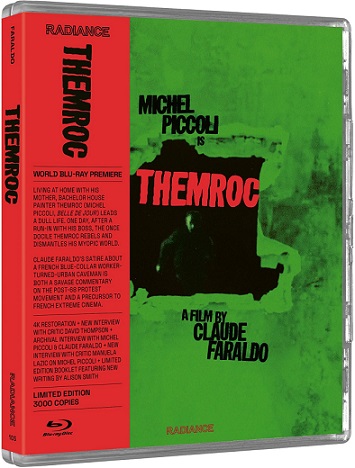
The late 1960s and early 1970s was a very experimental age for cinema, with old fashioned narratives falling by the wayside. In their place were more complex pictures pushing boundaries, as well as detailing controversial social issues. This was an era of titles like Blowup, Two or Three Things I Know About Her, Easy Rider, Zabriskie Point, Vanishing Point, Solaris and so many others that there isn’t enough space to list them all here.
In France, the situation was no different and even smaller movies and the artists behind them were making their voices heard across the country. Themroc is an interesting and unique satire that takes pleasure in provoking its audience. This film is also a satire, meaning that it uses humor to make a lot of its points. The tone actually helps the more extreme elements go down easier, and one can see why the feature ended up making a big impression and becoming a cult film.
Radiance Films is now delivering a “Limited Edition” Blu-ray of the movie with vastly improved image quality. This was a low-budget effort shot on Super 16mm, so there will always be natural grain present. However, the 4K restoration from the original camera negative means that everything looks about as crisp and impressive as it can (the titles cards look as striking as a regular 35mm feature) and this is no doubt the best that the film has ever looked. The disc also contains plenty of enticing extras that help explain everything that director Claude Faraldo was attempting and how audiences of the day responded to the movie.
The feature has no discernable dialogue, with all of the characters either grunting or speaking in gibberish. Themroc (Michel Piccoli) is a laborer who gets up every morning in a rundown apartment and repeats the same pattern. He is lonely, has lustful impulses, and his painting job isn’t pleasant either, as he is constantly yelled at by those around him. His fellow workers also squabble and get into conflicts with each other instead of their employers.
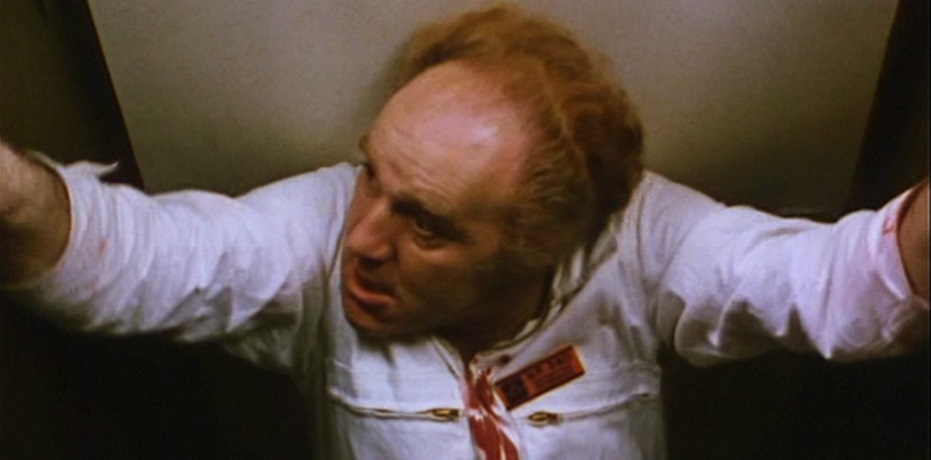
After seeing Themroc go through this same pattern day after day (and developing a lasting cough), he finally has a breakdown. He returns home, cements his room off, and takes a hammer to the walls. This figure ends up throwing away all materialistic possessions and begins following his base instincts. Others in the block of residences are also unsatisfied in life, and become fascinated by his new way of living. Many witness him acting out and appearing happier for it. They join him, eventually living a commune-like existence together in his cave-room. Of course, things do become increasingly odd, as Themroc engages in socially questionable behavior that includes incest and ultimately cannibalism.
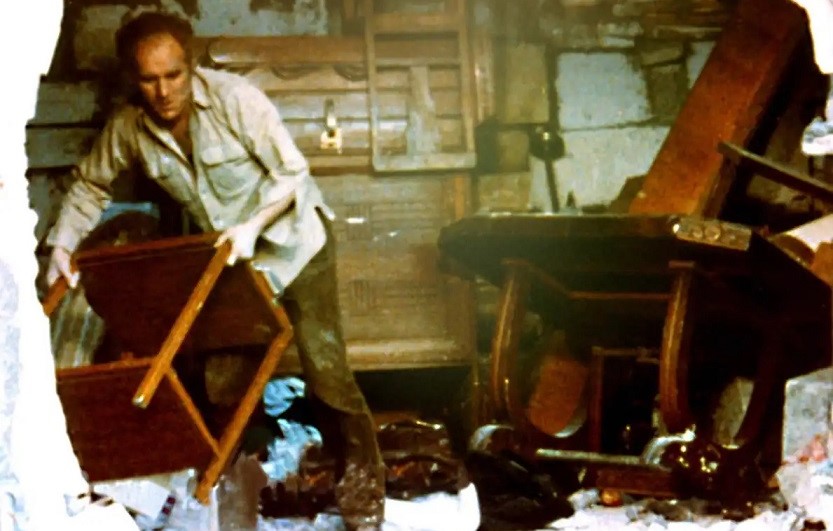
The lack of dialogue isn’t any problem here, especially since the lead is returning to a more primal state. In fact, it helps with the presentation when the entire story about a man rejecting social codes and the modern world is told only through visuals. When there are conflicts and disagreements, it’s noted in the angry grunts and screams and the specifics of what it’s about isn’t necessary. There are a few surprisingly disturbing elements towards the chaotic close, but they aren’t played for horror. Even with negative aspects of this new state being adopted, the film doesn’t criticize these anarchists. Viewers simply witness events and are encouraged to discuss the ideas as things come to close.
As mentioned, despite being about a very serious subject, the tone is more humorous than anticipated and many jokes are amusing. There is a funny running gag early on as Themroc and a neighbor across the street bike to work together every morning, literally leaning on each other. When the protagonist ends his normal routine, the other man can’t function properly and simply falls to the road as he alone attempts to replicate his usual biking behavior. The government and outside forces attempt to stop Themroc and his group, leading to a funny gag as another worker tries to rebuild the wall on the lead and his cohorts. This is played in jest, with the man simply whistling while plastering and putting bricks in place as the group stares. The lead then uses his fingers in the wet mortar to slow him down, before winning the worker to his side by appealing to his baser instincts.
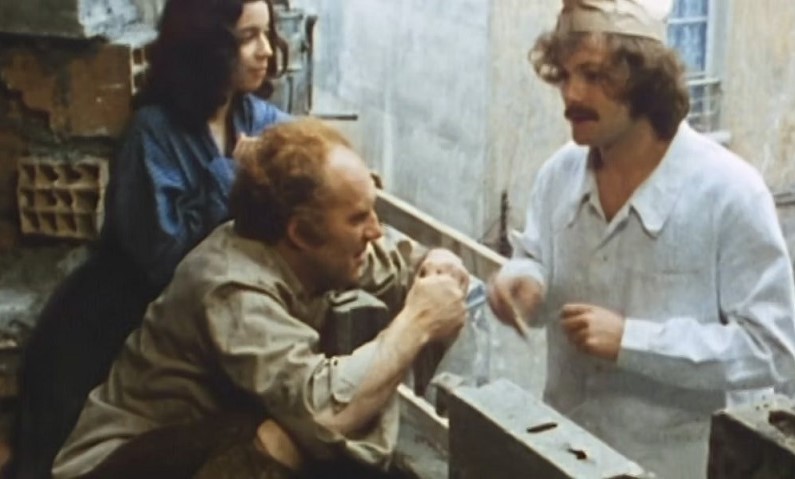
The film also uses montage in interesting ways, frequently showing the same action over a series of days in order to liven up the daily routines for audience members. The film ends with audio of a group orgy, as Themroc’s ideas take hold in the area. This is shown via a series of rundown Parisian buildings, all scored to sounds of ecstasy. It’s certainly a unique picture and one that makes an impression on the viewer and leaves them with plenty to consider.

This disc also arrives with some great bonuses. There is an interview with a critic who discusses the story, its themes and cinematic techniques, director Claude Faraldo, and more. It seems that, as many would have already guessed, Faraldo was interested in pushing the buttons of viewers. Many aspects were inspired by his own working-class life. The speaker also notes that while popular in its day and boasting some completely unique movie-making techniques, Faraldo only made a handful of pictures and rarely gets mentioned in French cinema journals. In fact, it’s hard to find much of any information about why his career didn’t prosper or why he didn’t get more films made. The critic also goes on about concern about the movie in other countries (perhaps they thought it would encourage anarchy). But when it finally aired on British TV, the only complaints from viewers regarded the warning label (a red triangle) that was superimposed on the screen as the film aired.

Additionally, there is an interview with star Michel Piccoli and Faraldo recorded during the movie’s 1973 release. It begins with audience members describing what they thought of the picture after a screening (there are a wild variety of reactions). The actor and the director are then seated in close quarters within a room full of movie enthusiasts discussing what it all meant. It’s a fun piece, especially seeing discourse and occasional arguments between the makers and audience members (who are so close they practically blow cigarette smoke in each other’s faces).
And there is another featurette on the work of star Piccoli. The performer has a long and impressive career and the critic goes over some of his titles and how he connected and was so popular with audiences. It seems that at this point in his life, Piccoli would do a couple of traditional narrative features, and then participate in something more experimental. This resulted in a varied and impressive series of credits.
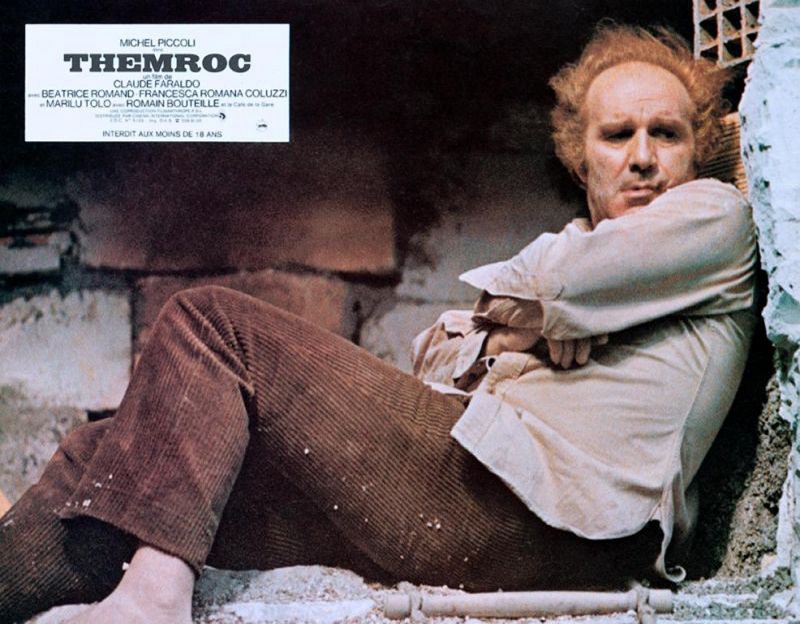
A gallery and trailer are also included on this disc. And there is a booklet with writing on the film, as well as packaging with new and original sleeve art for the film. It’s all very nicely put together.
I liked Themroc more than I expected to. While I can imagine that at the time some might have found the dialogue-free approach gimmicky, it actually works well. In fact, those who enjoy counterculture films of the 1970s (like some of the those listed at the top of this release) will find plenty to appreciate in this film. The presentation is excellent and this is another great title and package from Radiance Films.


